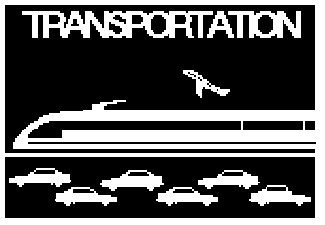
For traffic enforcement, the budget proposes a significant increase in the expenditures of the California Highway Patrol primarily due to an increase in the number of traffic officers, additional telecommunications expenditures and consolidation with the California State Police. The expenditure level of the Department of Motor Vehicles is also proposed to increase in order to implement various new legislation. The budget proposes total state expenditures of about $5.1 billion for transportation programs in 1995-96. This is an increase of $660 million, or 15 percent, over estimated expenditures in the current year.
Figure 1 shows that state-funded transportation expenditures increased by $2.2 billion since 1988- 89, representing an average annual increase of 8.7 percent. When adjusted for inflation, these expenditures increased by an average of 5.4 percent annually. In addition, Figure 1 shows that transportation expenditures have increased as a share of total state expenditures over the period. This change is largely the result of the passage of the Transportation Blueprint legislation in 1990 which provided additional state funds for highway and mass transportation programs. In 1995-96, proposed transportation expenditures will constitute about 9.2 percent of all state expenditures.
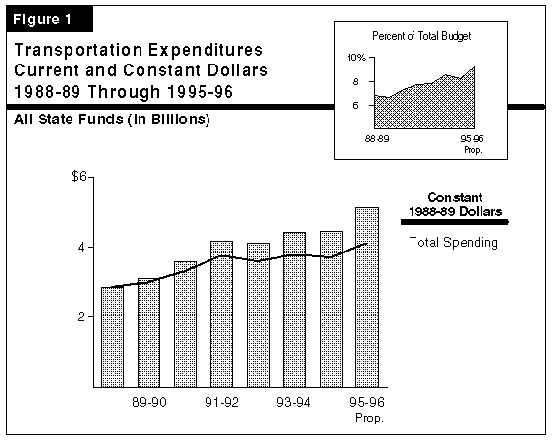
Of the 1995-96 state transportation expenditures, about $4 billion is proposed for programs administered by the state, and about $945 million is for subventions to local governments for streets and roads purposes. Another $180 million is projected to be for debt service payments on rail bonds issued under Propositions 108 and 116 of 1990.
Figure 2 shows spending for the major transportation programs in detail. Specifically, the budget proposes expenditures of $6.2 billion for the Department of Transportation in 1995-96 an increase of $197.4 million (3.3 percent) over estimated current-year expenditures. The higher expenditure level reflects an increase of about $800 million in state and federally-funded expenditures, offset by a decrease of $600 million in reimbursed expenditures for highway capital outlay projects.
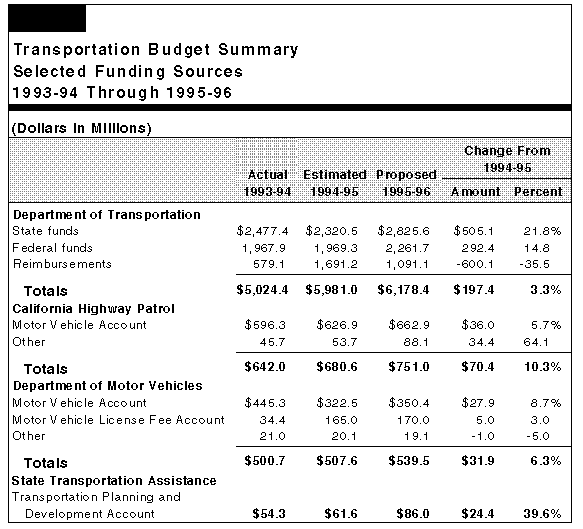
Spending for the California Highway Patrol (CHP) is proposed to increase in 1995-96 by $70.4 million, about 10 percent. The increase is due in part to funding of 180 currently vacant traffic officer positions, and expanding the department's vehicle theft enforcement programs. In addition, the increase reflects the budget proposal to transfer the California State Police to the CHP, beginning July 1, 1995.
For the Department of Motor Vehicles (DMV), the budget proposes expenditures that are about 6.3 percent higher than in the current year. The proposed expenditure level of $539.5 million results mainly from an increased workload related to the implementation of various recently enacted legislation.
Additionally, the budget proposes an increase in the State Transportation Assistance (STA) program in 1995-96 to reflect higher projected revenues into the Transportation Planning and Development (TP&D) Account. The STA program provides funds to local transportation agencies to operate public mass transit systems. Annual funding of the program is based on a statutory formula and varies depending on anticipated revenues into the TP&D Account. Major Budget Changes
Figure 3 presents the major budget changes proposed for 1995-96 in various transportation programs.
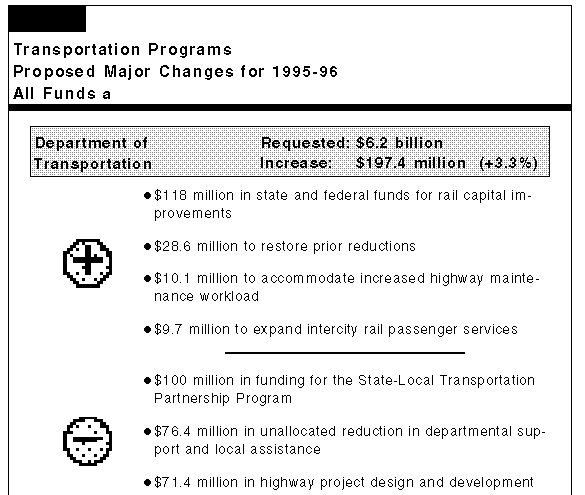
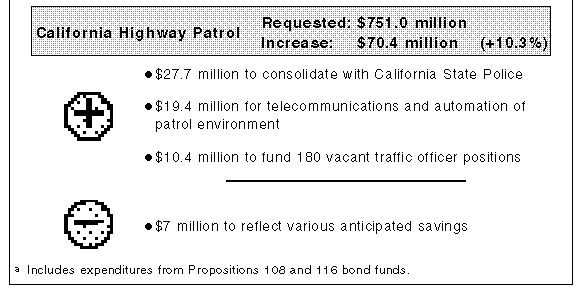
As the figure shows, the budget proposes to reduce the funding level of the State Local Transportation Partnership Program by $100 million. The budget also proposes a reduction of $71.4 million in highway capital outlay support (design and engineering) and an unallocated reduction of $76.4 million in Caltrans support and local assistance funding. The effect of these and other actions is to reduce personnel by an equivalent of 1,226 personnel-years. At the same time, the budget proposes to provide $118 million in state and federal funds for rail capital improvements. The budget also proposes an increase in intercity rail passenger service of about $9.7 million, an additional $10 million to accommodate highway maintenance workload increase, and $28.6 million to restore prior year reductions.
For the CHP, the budget proposes $10.4 million to fund an additional 180 traffic officer positions which are currently vacant. This is the second phase of a three-year effort to increase the number of traffic officers. The budget also proposes to consolidate the California State Police with the CHP.